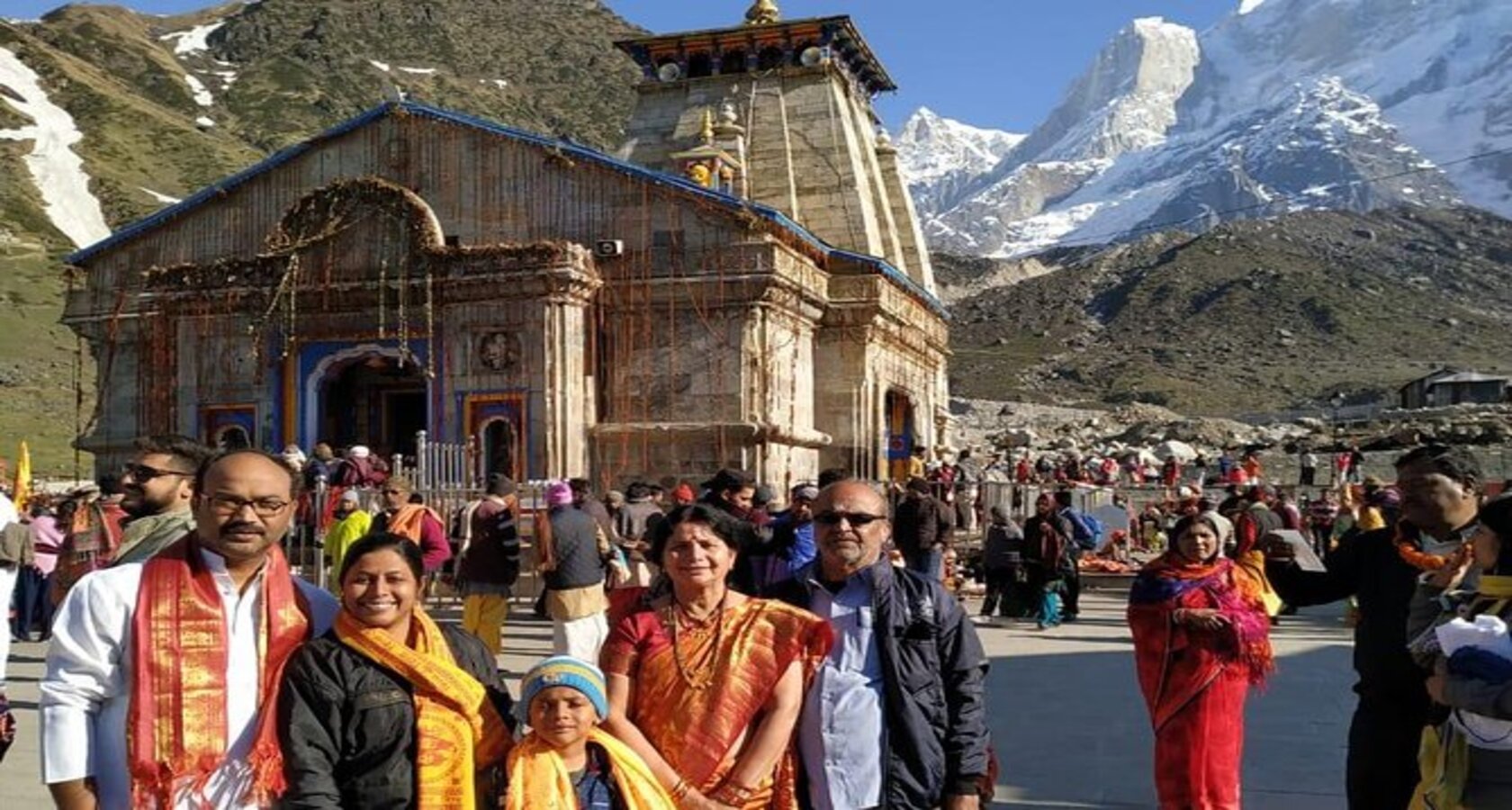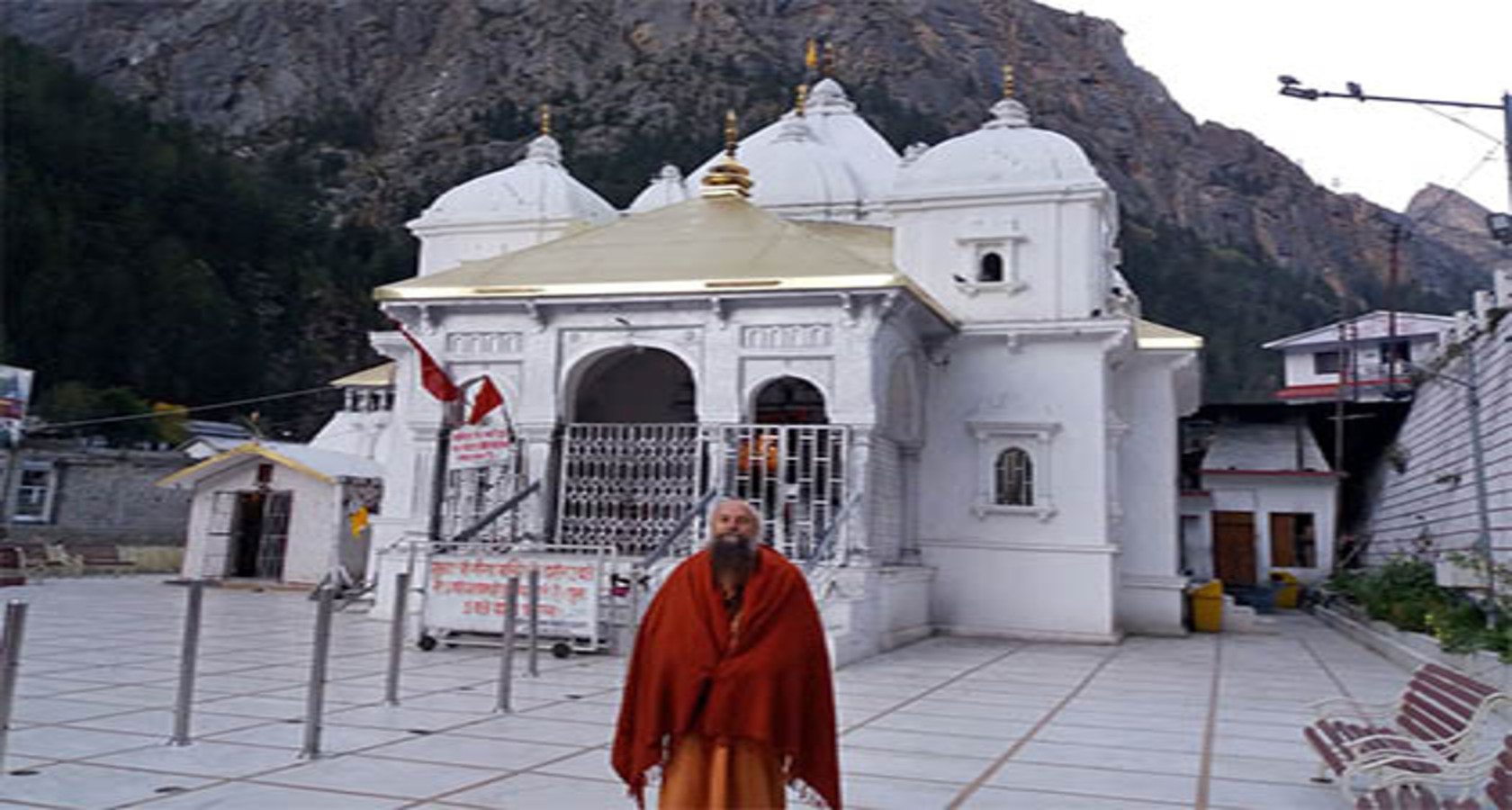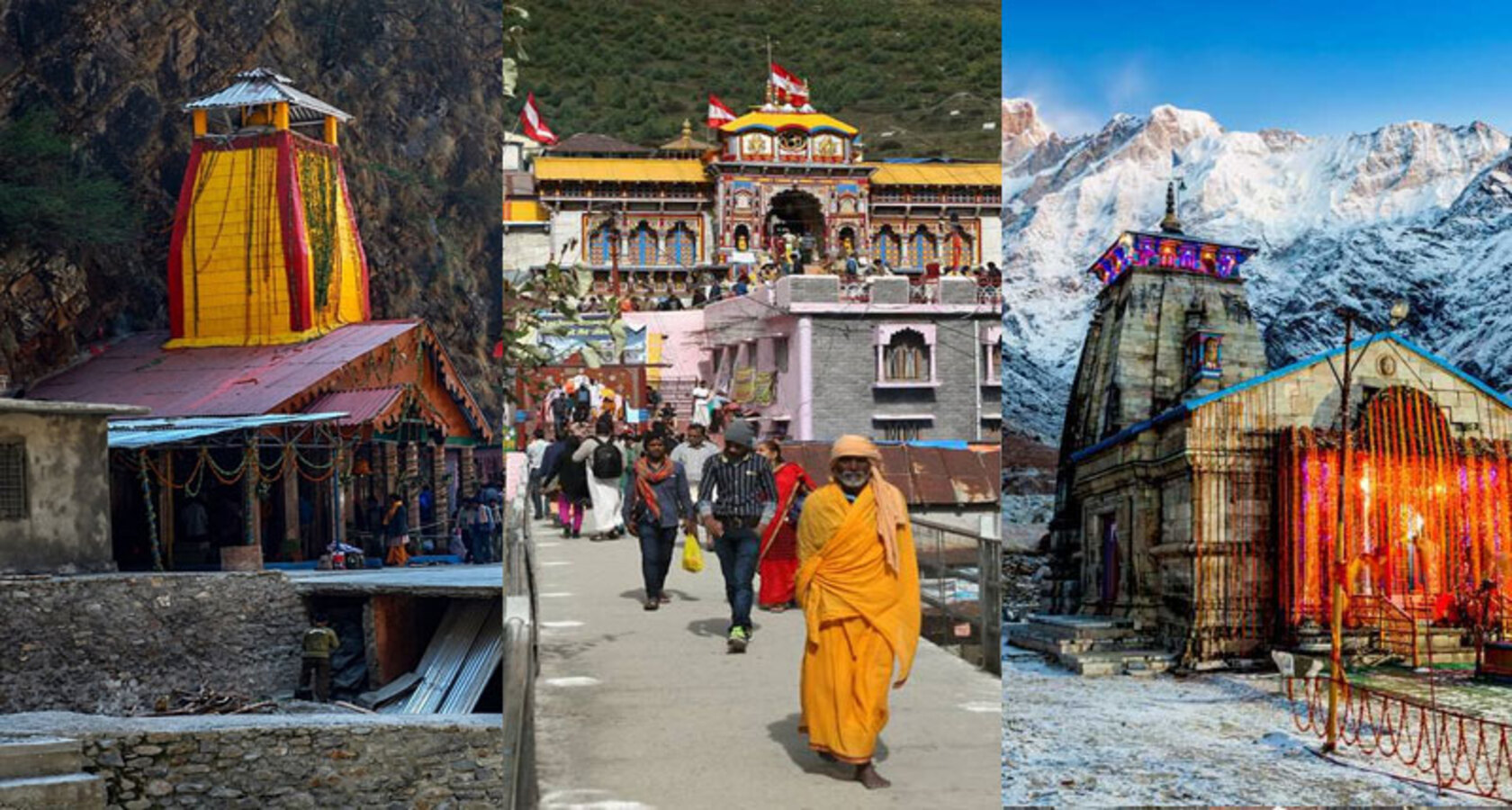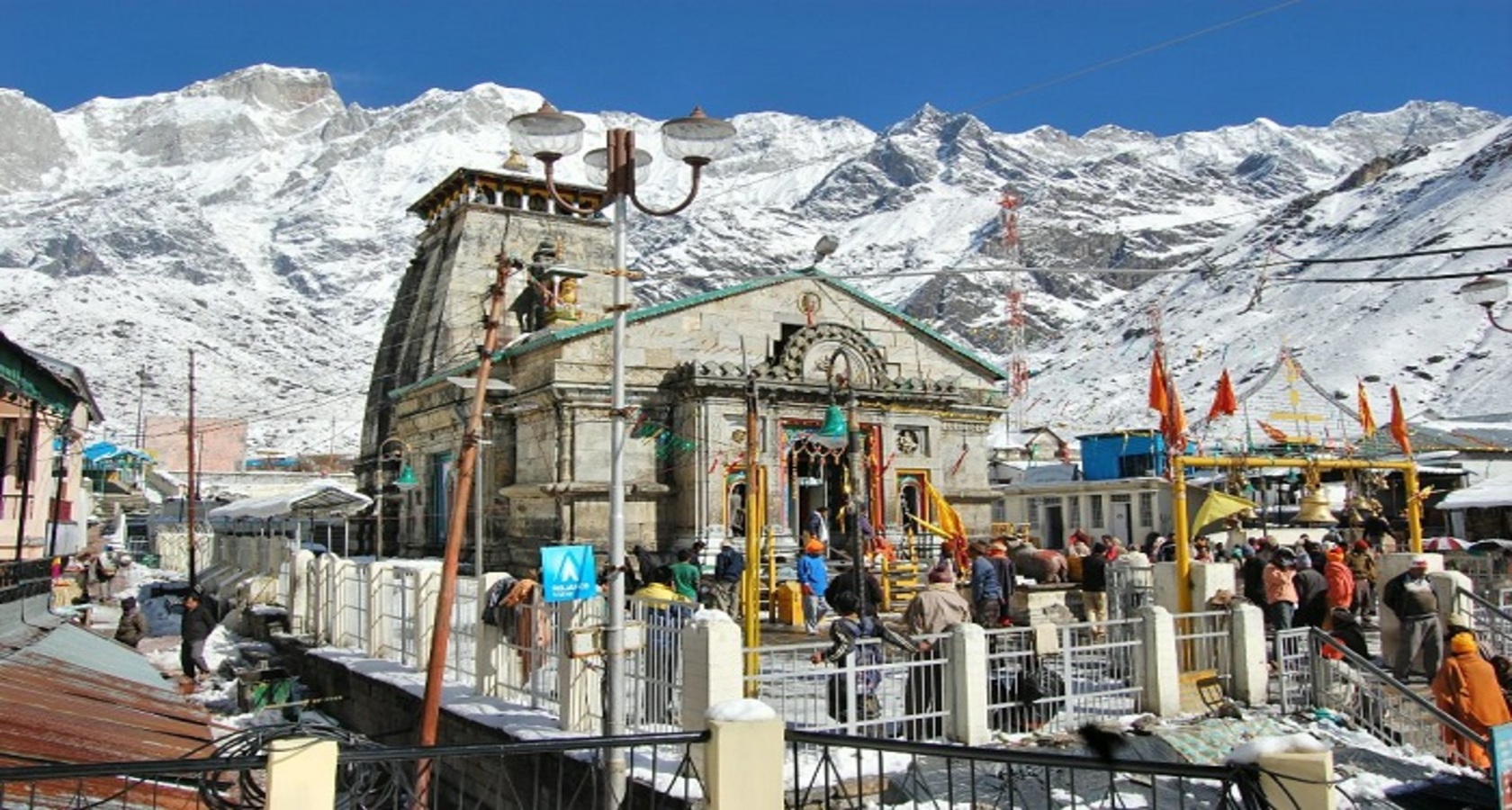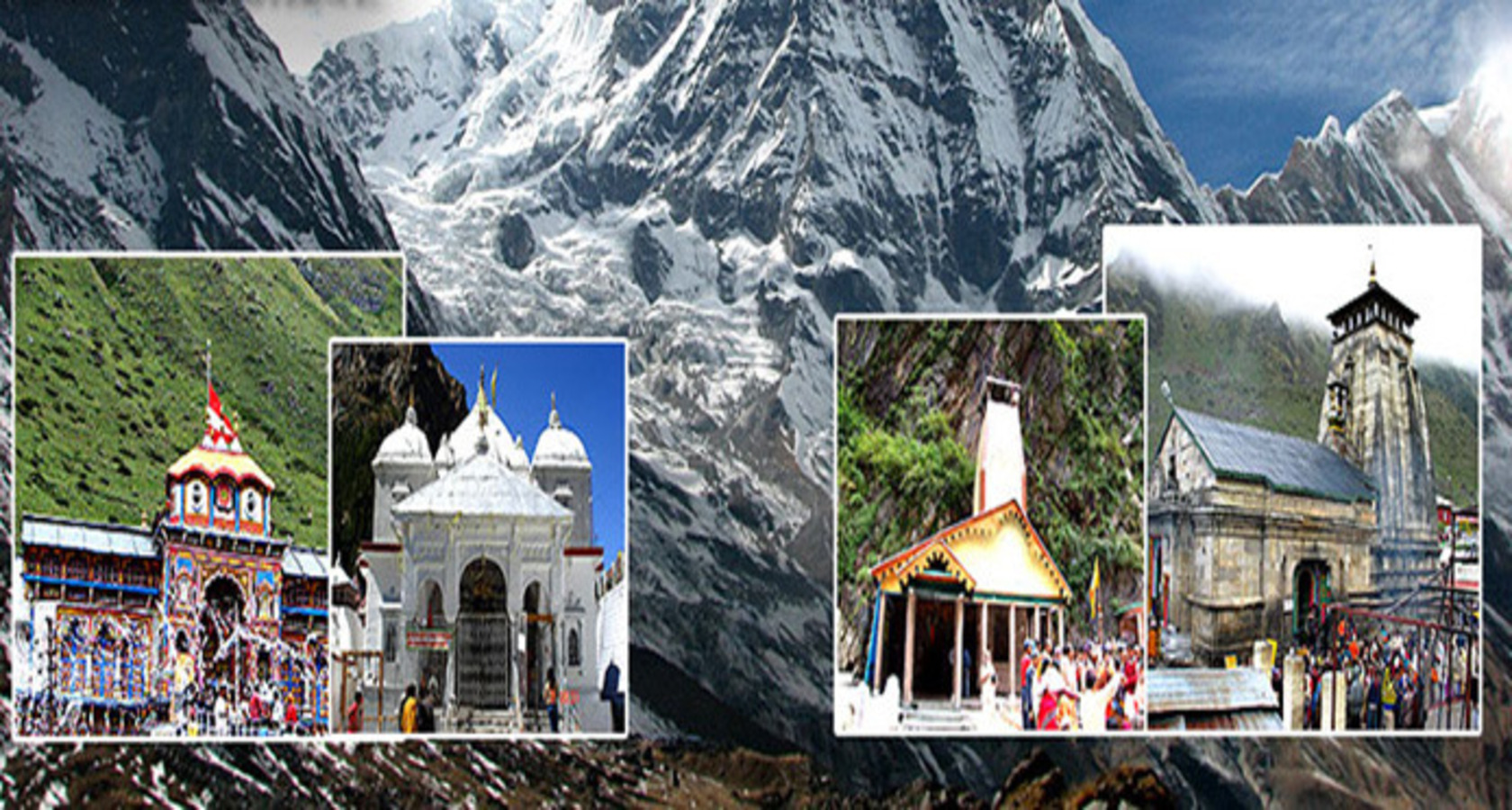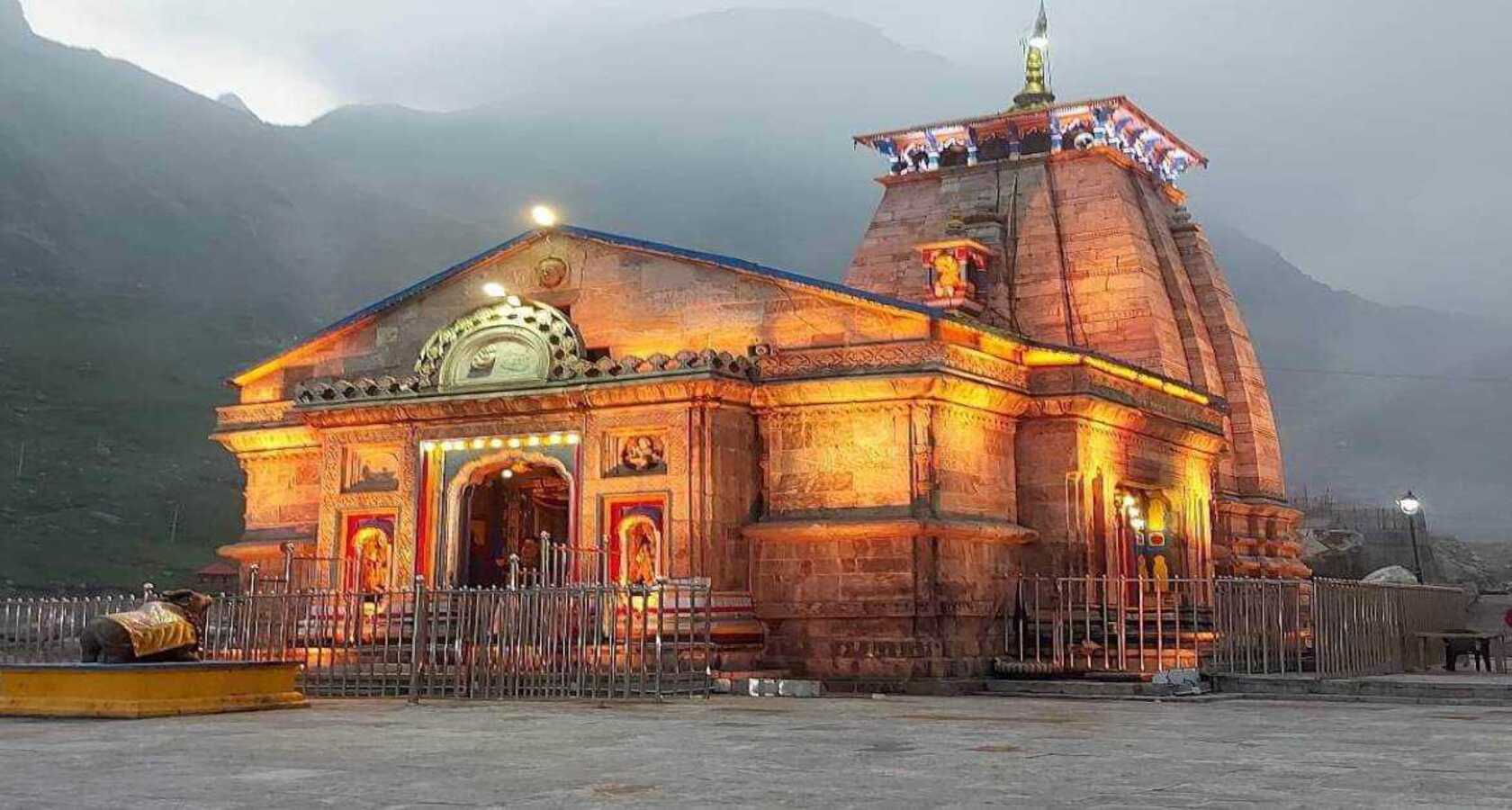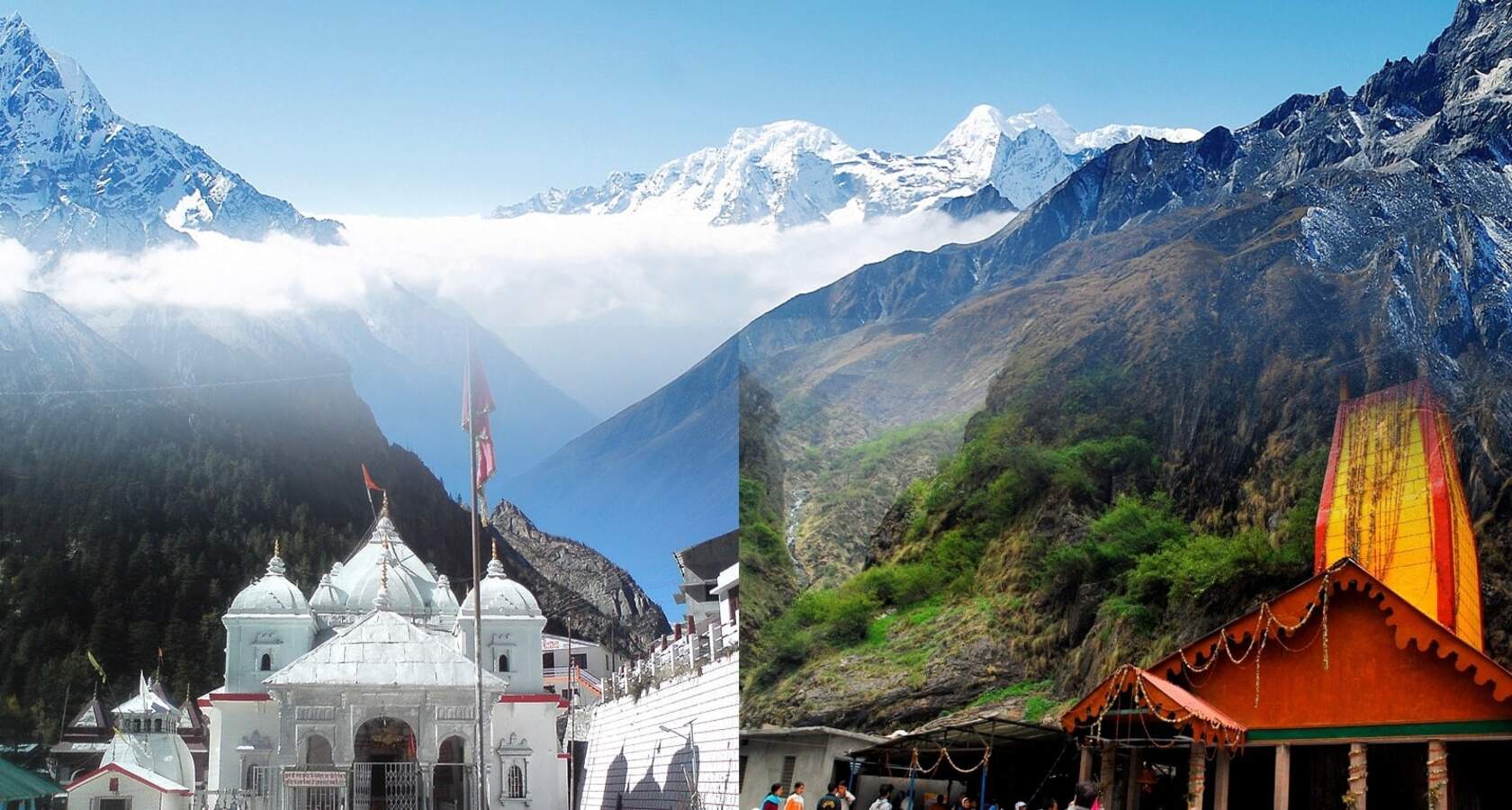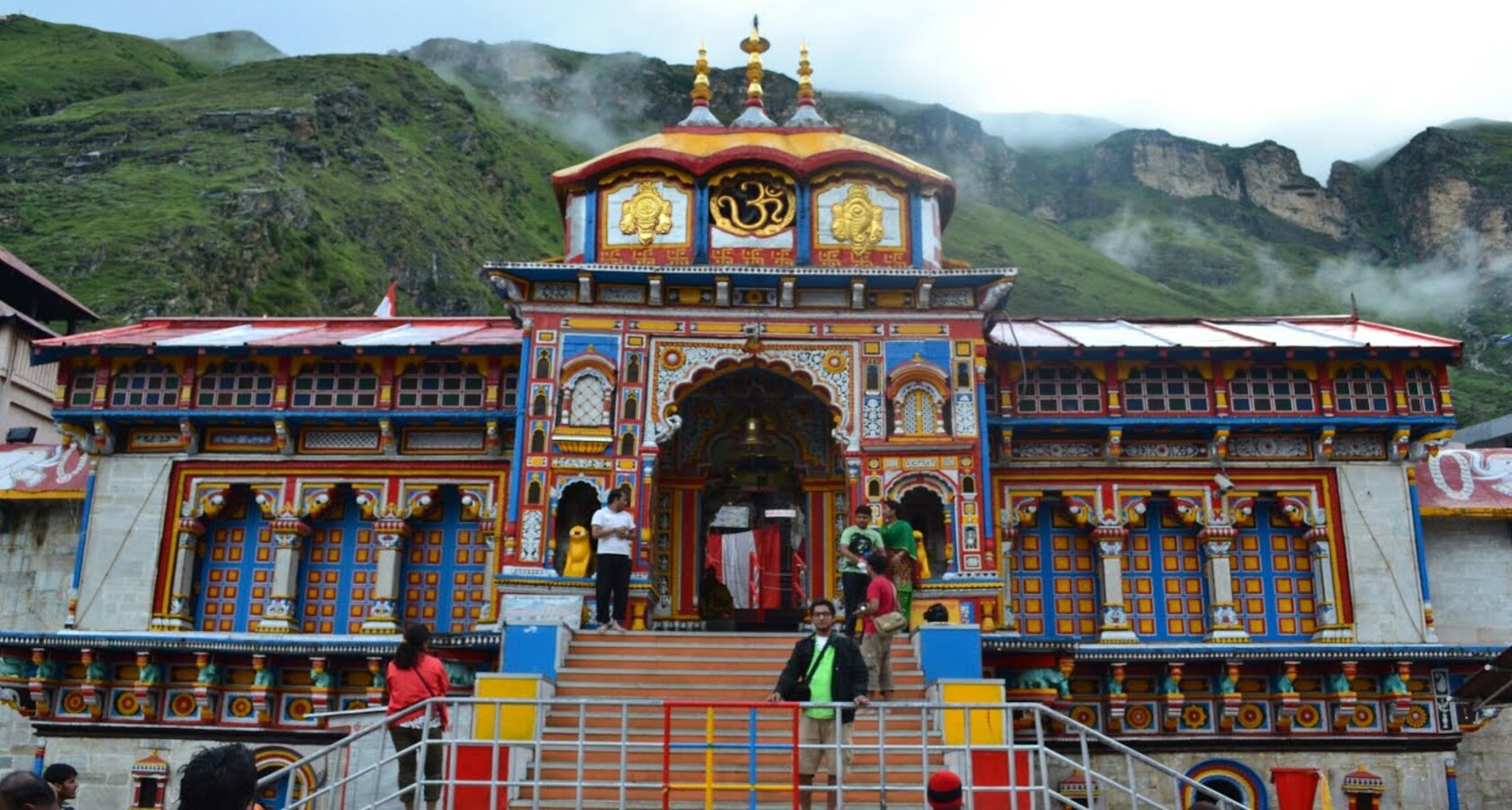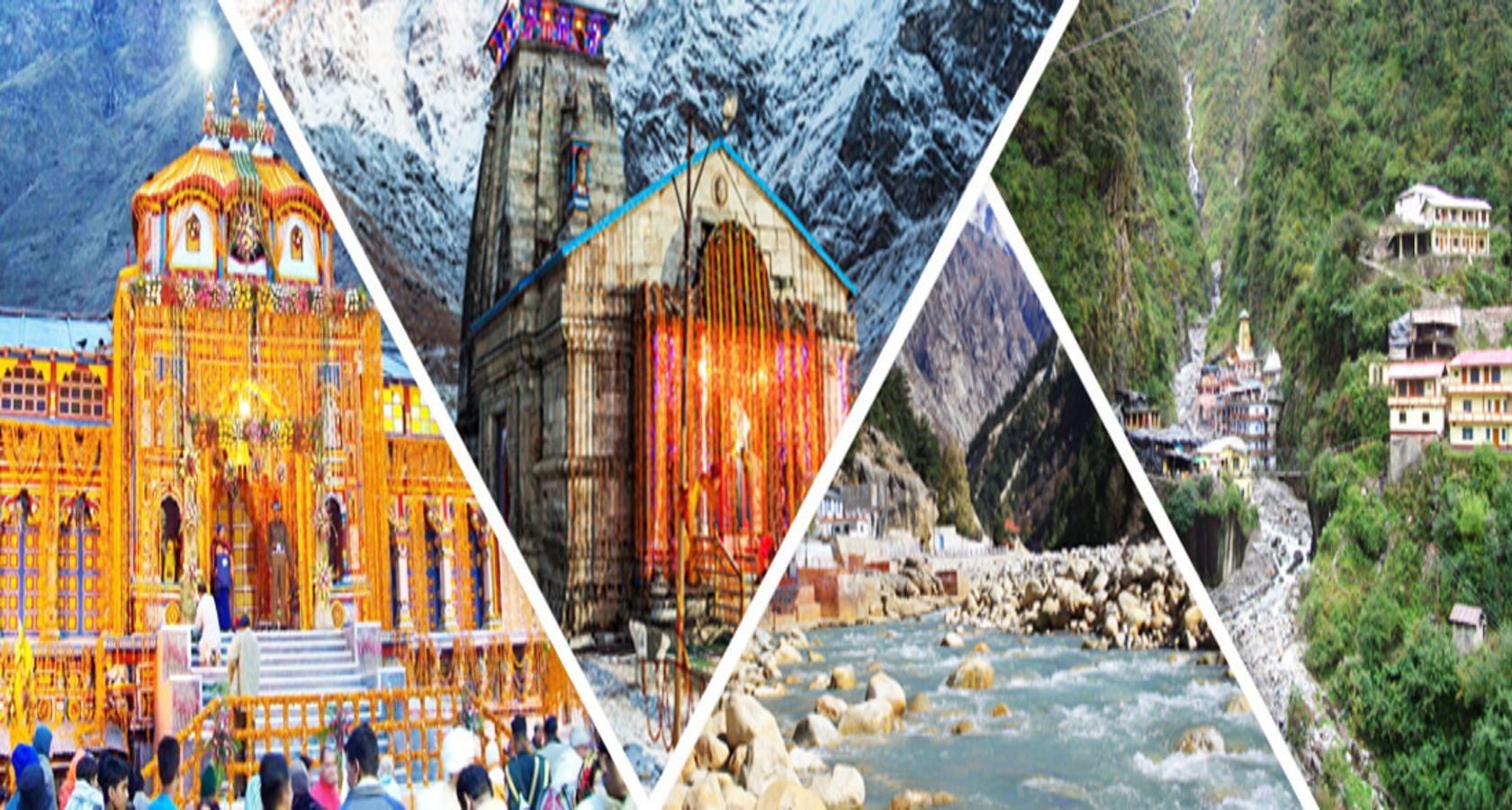
9 Days Char Dham Yatra from Haridwar Cost:15,000 Per Person Group Tour.
Package for A 9-Days Tour to Chardham from Haridwar
DURATION: 8 nights and 9 days
Package Tour to Chardham for Nine Days (From Haridwar)
Thousands of devotees travel to the well-known holy circuit in Chardham each year. Situated in Uttarakhand's high Himalayas, the Chardham Yatra comes to an end upon the completion of visits to the four Hindu pilgrimage sites of Yamunotri, Gangotri, Kedarnath, and Badrinath.
Char Dham Tour Schedule
This nine-day Haridwar-based Chardham pilgrimage tour provides holy darshan at all four sites along with cozy lodging and amenities in between the yatra.
DAY 1: Travel 210 km/7 hours from Haridwar to Barkot 1352 MTS is the height.
After meeting our driver in the morning in Haridwar, we depart for Barkot via Mussoorie, stopping along the way to see Kempty Fall and Mussoorie Lake. Later, make a direct drive to Barkot. When you get to Barkot, check into the hotel. Spend the night at Barkot.
Barkot Weather: Summer temperatures are often comfortable, ranging from 25 to 30 degrees Celsius; winter temperatures are good during the day but chilly at night, with temperatures between 10 and 5 degrees Celsius.
Distance: 210 kilometers
Time: seven to eight hours
DAY 02: 36 km by car and 6 km by foot (one way) from Barkot to Yamunotri to Barkot 3235 meters above sea level.
Drive to Jankichatti or Phoolchatti in the morning after breakfast (bring your own breakfast) and begin your 6-kilometer trek to Yamunotri (either on foot, by horse, or by Doli at your own expense). Trek back to Jankichatti after having "Darshan" of "Yamunaji" and bathing in the warm water of Jamunabai Kund. Drive to Barkot later on and spend the night there.
Yamunotri shrine: During the 1800s, Jaipur's Maharani Gularia constructed the shrine. In the current century, it has been reconstructed after being demolished twice. Rice in Yamunotri can be cooked by wrapping it in a cloth and submerging it in the Tapt kund's hot water.
DAY 03: Barkot to Uttarkashi (four hours, 100 kilometers) 1352 MTS is the height.
Drive to Uttarkashi in the morning after breakfast. When you get to Uttarkashi, check into the hotel. Go to Uttarkashi's Kashi Vishwanath Temple. Spend the night at Uttarkashi.
There are numerous temples and ashrams in Uttarkashi. The town's name, which refers to its proximity to and closeness to the city of Kashi (Varanasi), is indicative of this. Like Varanasi, Uttarkashi is a town that lies on the banks of the Ganga River.
One of the earliest Shiva temples in Northern India is the Vishwanath temple. rebuilt in the traditional architectural style by Maharani Khaneti Devi of Tehri State in 1857. It is located in the center of the community.
DAY 04: Uttarkashi to Gangotri to Uttarkashi (100 km/3-4 per side) The height is 3048 MTS.
Early morning (packed breakfast) drive to Gangotri, stopping at Gangnani to have a holy plunge in Garam Kund before continuing on to Gangotri via the picturesque Harsil Valley. Harsil is well-known for its natural beauty and the breathtaking vistas of the Deodar trees and mountains. Upon arrival at Shree Gangotri, take a holy bath in the sacred river Ganges, also known as Bhagirathi at its source. Perform Pooja and Darshan, then take some time to rest in the beautiful surroundings. Later, drive back to Uttarkashi. Overnight stay in Uttarkashi.
DAY 05: Uttarkashi to Guptkashi (220 kilometers/8-9 hours) The height is 1319 MTS.
After breakfast, head to Guptkashi via Moolgarh and Lambgoan. En route, you may witness the magnificent Mandakini River at Tilwara. The Mandakini River originates near Kedarnath; drive alongside it to Guptakashi, where you can visit the Ardh Narishwar Temple. Check into your hotel upon arriving in Guptakashi. Overnight stay at Guptakashi.
Guptakashi: The word Gupt Kashi means "hidden Benares." According to mythology, when the Pandava brothers sought a glimpse of Shiva, Shivji first concealed himself at Guptkashi before fleeing farther up the valley to Kedarnath, where the Pandavas eventually had their wish granted. There are more physical ties as well. The Kedarnath pandas (priests) dwell in Guptkashi during the winter months and after.
Day 6: Kedarnath to Guptkashi (30 km by road and 19 km by foot, one way) 3384 meters above sea level.
Through Helicopter: Our driver will transport you to your pre-booked Helipad in the morning. Our driver will drop you off at the hotel so you may recover after the ride. (Note: This bundle does not include a helicopter ticket.)
By Trek: Getting up and down from Sonprayag in a single day is challenging. However, if you get to Kedarnath using a helicopter or horses, it is possible. Please work closely with the driver, as they're unable to remain in Sonprayag owing to parking issues and network problems.
Day 7: Guptkashi to Badrinath (160 km, 7 hours) 3133 meters above the sea level.
Go to Badrinath by car in the morning after breakfast. At Badrinath, check into the hotel. Once they have bathed in the Taptkund, pilgrims enjoy the twilight Darshan of Badrivishal and Aarti. For the Pinddan Shraddh of the ancestors (Pitrus), Brahamakapal is considered significant. Additional noteworthy tourist destinations include Mana, Vyas Gufa, Maatamoorti, Charanpaduka, Bhimkund, and the Saraswati River's "Mukh." Very close to Badrinathjee, around three kilometers. Spend the evening at Badrinath.
Standing at an elevation of 3,133 meters and protected on two sides by the two mountain ranges known as Nar & Narayan, with the towering Neelkanth Peak, Badrinath is one of the country's most popular pilgrimage sites. It is one of the "Ancient Four Dhams."
It is common to bathe in Tapt Kund, a natural thermal spring on the Alaknanda River bank, before visiting the Badrinath temple.
Mana settlement: The final Indian settlement before Tibet, it is home to an Indo-Mongolian tribe.
Vasundhara: This spectacular waterfall lives up to its name. This location is 5 kilometers from Badrinath, of which 2 km may be reached by car up to Mana.
Bhim Pul: Across the raging Saraswati River from Mana village is a huge rock that acts as a natural bridge. It is thought to have been erected there by Bhim, the second oldest of the five Pandava brothers, and offers a breathtaking view of water pouring down through the little opening beneath the rock.
Vyas Gufa: This rock-cave, close to Mana Village, is thought to be the location where Ved Vyas wrote the Mahabharata and the puranic comments.
Badrinath Climate: There will be an average maximum temperature of about 18°C and an average low temperature of 8°C. when this reason, wearing warm, woolly clothing is necessary when visiting Badrinath at any time of year. In Badrinath, snowfall is a common feature of winter. With an average low of 5°C, winter is quite cold. Owing to the severe weather, tourism is typically not allowed at this time of year.
Distance: 160 kilometers
Duration: 7 hours
DAY 8: 160 km/7 hours from Badrinath to Joshimath to Rudraprayag 895 MTS is the height.
A driver departing for Rudraprayag via Joshimath in the morning post breakfast. After visiting the Narsingh Temple in Joshimath, return by car via Joshimath to Rudraprayag. When you arrive at the Rudraprayag hotel, check in. Spend the night at Rudraprayag.
Situated on the slopes above the confluence of the Alaknanda and Dhauliganga rivers is Joshimath. As the winter residence of Badrinath, Joshimath is one of the four "Maths" that Adi Shankaracharya created. To be worshipped, the idol is carried down to Joshimath and placed in the temple. The township is home to numerous additional temples. The shrine of Nir Singh, which houses an idol of Lord Vishnu, is the most significant.¬¬¬
Day 9: Rudraprayag to Haridwar (165 km; 5–6 hours)
Drive via Rishikesh to Haridwar in the morning after breakfast. Known as the "place of sages," Rishikesh is a well-known spiritual village on the Ganga River that is encircled on three sides by the Shivalik range of the Himalayas. It is stated that after Raibhya Rishi performed severe penances, God took the form of "Hrishikesh," and as a result, this region was originally called Rishikesh. Visit the Laxman Jhulla and Ram Jhulla sights at the Rishikesh Temples thereafter. Drop off in Haridwar.
Hindus consider the city of Rishikesh, which bears the name of Lord Vishnu, to be sacred. Known as the global capital of yoga, this northern Indian state nestled in the Himalayan foothills is also home to numerous internationally recognized ashrams. The styles of Rishikesh
Hotels:
Barkot Deluxe Luxury Hotel Riya or Equivalent Something Like Camp Ring Veda
This entry was posted on behalf of Uttarkashi Hotel Him Ganga NXE, Uttarkashi Hotel Him Ganga AC,
Guptkashi Hotel Giriraj, Shivalik Valley DLX,
Bardinath Hotel Patliputa, Hotel Snow Crest,
Rudraprayag Shangri-La Resort Non AC, Samrat Resort AC, and other similar establishments.
Note: The MAPAI Plan comes with a room, dinner, and breakfast.
Included in the package
Hotel accommodations in accordance with the same or comparable packages.
Dinner and breakfast
sightseeing and transfers in a prepackaged vehicle
All parking, fuel, toll taxes, and driver allowances
All relevant transportation and hotel taxes.
Exclusions from the Package
There will be additional GST.
Anything not listed in the "Package Inclusions" section
All personal costs, extra meals, and optional tours.
travel and health insurance.
Any entrance fees, wherever they may be, if not specifically stated.
Gratuities, health insurance, medical coverage, laundry fees, alcoholic beverages, mineral water, and phone costs.
Everything that is personal.
Porter, horse, pony, cable car, ferry, rail, and airline tickets fees.
The price of the helicopter ticket and the Kedarnath Darshan VIP ticket are not included
